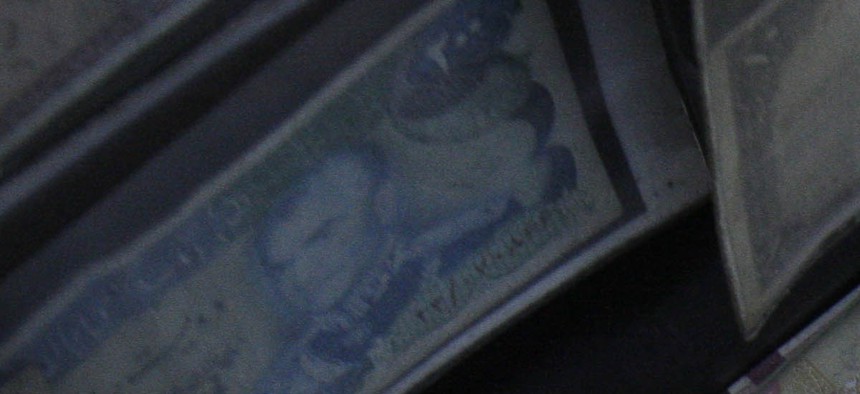Unwinding 34 Years of Sanctions on Iran Won't Be Easy
The current sanctions regime is a labyrinthine mix of laws, executive actions and involves many international actors. Easing them will be an arduous task for Obama. By Kaveh Waddell
With a 15-minute phone call on Friday, presidents Hassan Rouhani and Barack Obama publicly signaled a readiness to engage after 34 years of venomous rhetoric and diplomatic silence between Iran and the United States. The day before, U.S. Secretary of State John Kerry sat with his Iranian counterpart, Foreign Minister Mohammad Javad Zarif, to discuss Iran’s nuclear program. In return for a deal that would establish enforceable standards to limit Iran’s nuclear capabilities, Iran expects significant sanctions relief. “In the endgame,” Zarif said after the meeting, Iran wants “a total lifting of sanctions.” In an interview with CBS’s 60 Minutes, Kerry affirmed that Iran and the U.S. could reach a deal in the next three to six months—sooner, even, if Iran is “forthcoming and clear” in its negotiations.
But shifting from the stick of crippling economic sanctions to the carrot of sanctions relief is a complicated and slow process, and it would be challenging for the process to keep up with the pace of a swift rapprochement.
Iran’s economy has been targeted by sanctions since the Islamic Revolution in 1979, and its prolonged separation from the world economy has taken a toll on the country. Today, unemployment is at 20 percent and inflation above 30 percent. A ban on selling aircraft or repair parts to Iran has contributed to 14 crashes and more than 1,000 fatalities in the past 16 years. Medicine is more scarce and more expensive than ever, and basic staples such as fruit, sugar, and poultry have seen their prices triple or quadruple since a renewed round of sanctions in 2012. “These sanctions are violent, pure and simple,” Rouhani said during his speech to the United Nations General Assembly on Wednesday. “It is the common people who are victimized by these sanctions.” Zarif has made it clear that sanctions relief is Iran’s first priority in these negotiations.
But in reality, 34 years of sanctions are very difficult to disentangle. The sanctions have been imposed by a number of actors for a variety of reasons, and peeling back each punitive measure would be a long and involved process. Ali Vaez, senior Iran analyst at the International Crisis Group, identifies multiple waves of U.S.-imposed sanctions with different objectives, each with a separate list of conditions that must be fulfilled before sanctions can legally be lifted. The first wave, from 1979-1995, was designed to punish Iran for supporting regional terrorist groups. The next wave was aimed at Iran’s nuclear program, and it went for the jugular of Iran’s economy: the oil and gas exports that make up 60 percent of the government’s annual revenue. Starting in 2006, the U.S. added human rights violations to the mix with the most aggressive set of sanctions yet, targeting Iran’s central bank and financial sectors.
To gain relief from sanctions aimed at Iran’s support of terrorism, its nuclear program, and its human rights violations, Iran would have to undertake enormous reforms across the board. The Iranian government would have to prove that it has not supported terrorism in the past six months; it would have to release unconditionally all political prisoners in the country, end its human rights violations, and establish an independent judiciary; and it would have to assure the world that its nuclear program is designed only to provide peaceful nuclear energy. These are not changes that anybody expects to see in the short term from the current Iranian government, if ever.
To further complicate matters, the myriad sanctions on the Islamic Republic originate from different actors. The U.S. has always led the charge for economic sanctions, but since 2006, the United Nations and the European Union have also been involved in creating an international sanctions regime. This means that the U.S. would have to coordinate with the international community to provide any meaningful relief.
Even within the U.S., the origin of sanctions laws varies: the current armada of sanctions is made up of 16 executive orders and nine congressional acts. Obama could annul the executive orders easily enough, but to lift the remaining, harder-hitting sanctions, he would have to go to Congress, hat in hand, at a poisonous moment in American executive-legislative relations. Approving sanctions relief would be an uphill battle: Congress’ most recent vote on the matter was in July, when the House of Representatives elected 400-20 to tighten sanctions on further goods and services. Obama has the authority to temporarily waive some sanctions, but the short time frame of a temporary waiver would preclude international investment or reengagement with the Iranian economy because of uncertainty about the long-term status of the sanctions.
Iran’s sudden enthusiasm for negotiation stems from its urgent need for timely, significant changes to the global sanctions regime. But the U.S. lost sight of the power of economic sanctions when it created a regime so inflexible that incentivizing cooperation through sanctions relief became near-impossible. Unless Obama can unite a divided legislature and rally the international community behind his push for diplomacy with Iran, the enormous inertia of the current system risks keeping it largely immobile. And if the U.S. cannot provide the relief that Iran craves, Iran’s motivation to comply with American demands will quickly deteriorate. A stick without a carrot is hardly worth bargaining for.





